
Fiat 500 C (2009-2024) engines, drive and performance
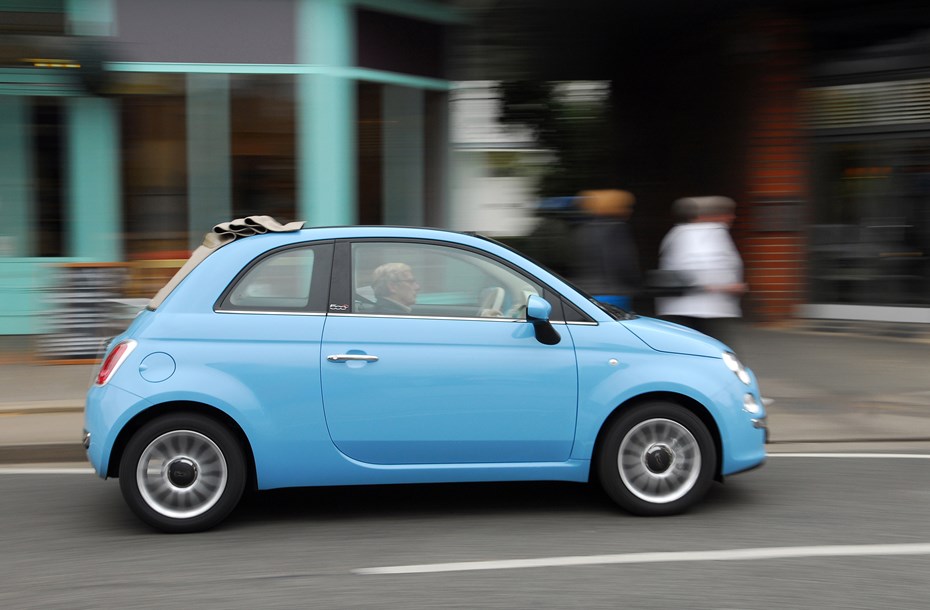
- Trio of petrol engines to choose from
- Diesels dropped (again) in 2018
- Fast models wear Abarth badges
A handful of engines have come and gone in the 500C’s lifecycle, but from 2018 it became petrol-only, all sized between 0.9 and 1.2 litres.
Economical Fiat 500C petrol engines
Despite being the largest-capacity petrol engine in the 500C range, the four-cylinder 1.2-litre motor is the least powerful of the trio of alternatives.
Mustering just 69hp and 102Nm of torque, performance is rather sedate – this isn’t a problem in the city, but expect it to be slow to build up to B-road and motorway speeds. Once up to 70mph, it pootles along satisfactorily, but is a bit noisy at high revs – a sixth gear would help here.
Unfortunately, that’s not an option. Two five-speed transmissions are available – a manual and a Dualogic automated gearbox – in both cases lending the 500C identical performance statistics. Top speed is quoted at 99mph, while the 0-62mph acceleration yardstick requires 12.9 seconds to complete.
Next up is the first of the two-cylinder 0.9-litre TwinAir engines – the smallest-capacity engine currently sold in the UK at 875cc.
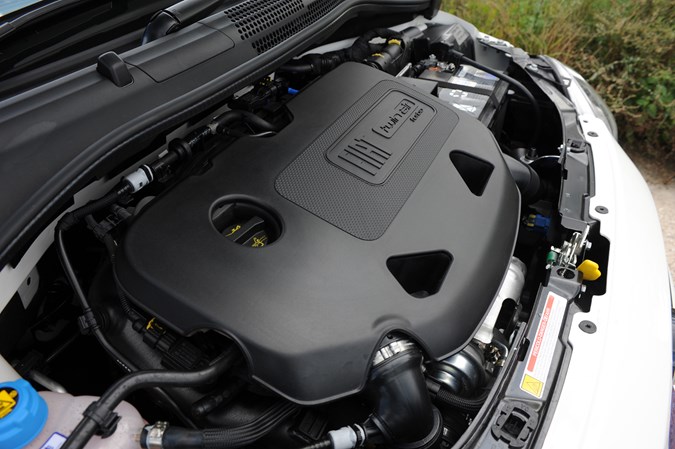
It’s turbocharged in order to pep-up its power, requiring high revs to extract the most from its performance. Depending on your sense of perspective, the accompanying soundtrack is either sonorously characterful or grating – either way, it’s not very efficient when worked hard.
The same gearboxes feature here as with the 1.2-litre, but with 85hp and 145Nm of torque it’s usefully quicker: top speed is 107mph, with an 11.0-second 0-62mph time.
Topping the Fiat 500C range performance-wise – remember that even faster versions are available as the Abarth 595 and 695 Convertibles – is a 105hp version of the TwinAir.
Torque output remains unchanged at 145Nm, but sole six-speed manual gearbox enables drivers to eke more urgency from the 500C: a 10.0-second 0-62mph time and a 117mph top speed.
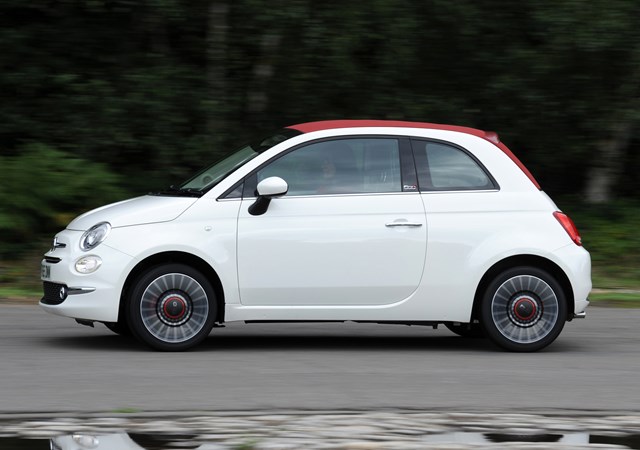
Fiat 500C engines no longer available
Buyers of older 500Cs might come across petrol models powered by a 100hp 1.4-litre, developing 132Nm of torque.
It’s top speed was 113mph, with a 0-62mph time of 10.5 seconds, but following the introduction of the more economical – according to official tests – TwinAir, the 1.4 was discontinued.
Two different diesels – both known as 1.3-litre MultiJets – have featured in the 500C, too. The first produced 75hp and 145hp, the more recent edition, discontinued in 2018, was lustier with 95hp and 200Nm of torque.
- Light controls, easy to drive around town
- Agile through bends, but not particularly fun
- Loss of roof hasn’t negatively impacted handling
If you’re hoping the Fiat 500C will handle with similar aplomb to a MINI Convertible, but for a fraction of the cost, then prepare to be disappointed. It doesn’t.
Where the 500C’s strengths lie are in urban environs, where the little soft-top is a doddle to weave in and out of traffic, as well as being a cinch to park given its diminutiveness. A large steering wheel and a City function to further assist the steering are simple but effective driver aids in this regard.
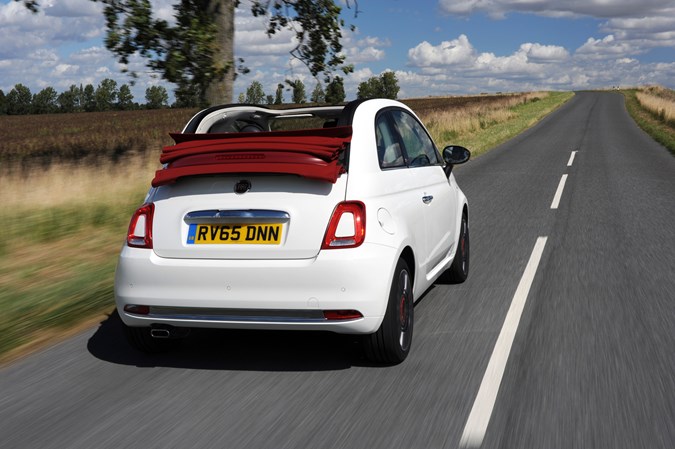
Nevertheless, that in-town agility is replicated out on winding B-roads, thanks to the Fiat’s short wheelbase and its wheel-at-each-corner stance, although the former point has a negative effect on comfort.
While you can thread it through bends neatly (once you’ve built up sufficient speed), there’s little about the 500C’s controls that communicate to the driver about traction or braking feel, although the steering does weight-up progressively in corners. It just lacks much in the way of fun.
The outlook isn’t gloomy, though, and one particular highlight is that the 500C’s handling isn’t inferior to its hatchback sibling, despite lacking a solid roof. That’s because the body sides shared with the hatch help the Fiat maintain its rigidity without the need for additional strengthening braces.


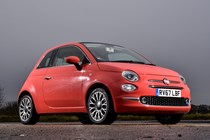
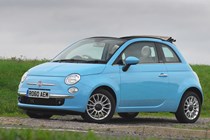

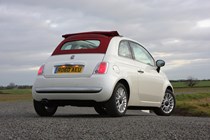
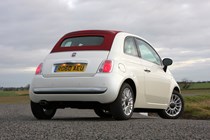
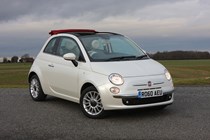
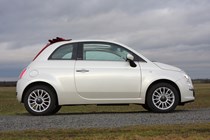
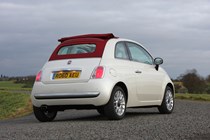
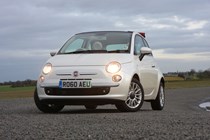
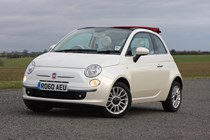

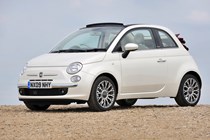
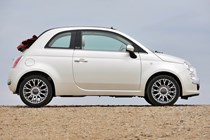
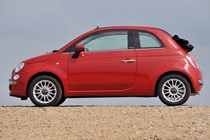
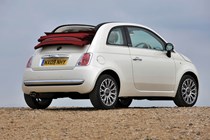
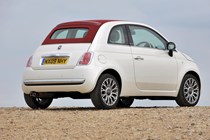
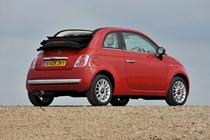
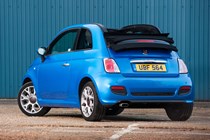
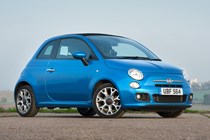
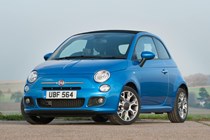
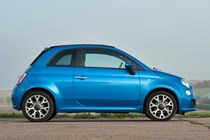
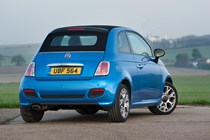
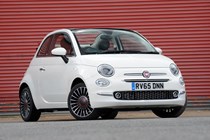
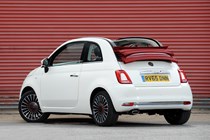
.jpg)
.jpg)

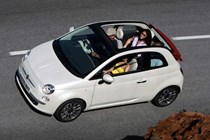
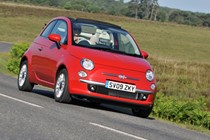
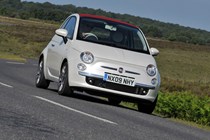
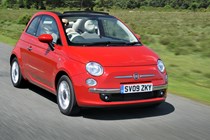
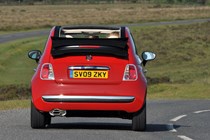

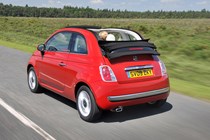
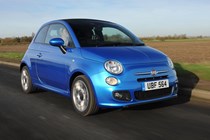
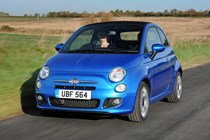
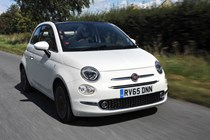
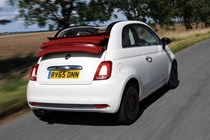
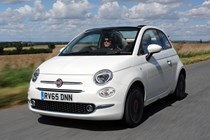
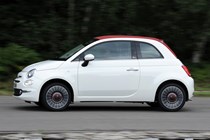
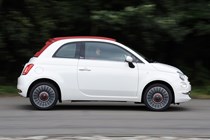

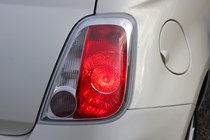
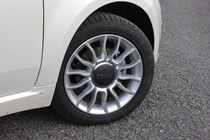
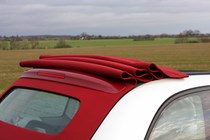
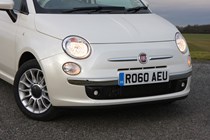
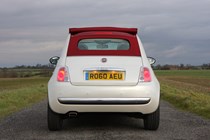
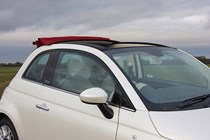
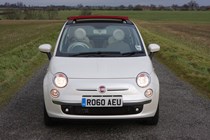
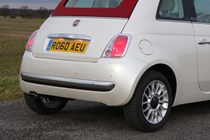
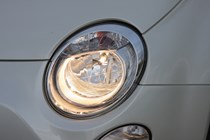
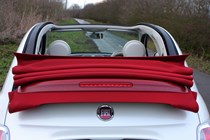
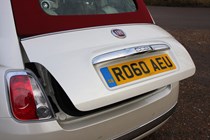
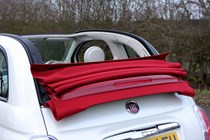

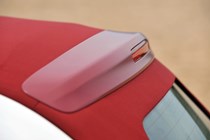


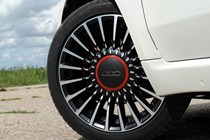
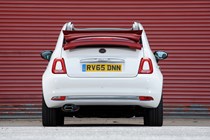


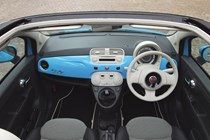

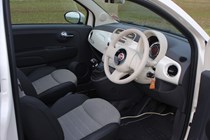
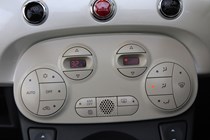
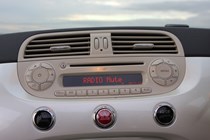
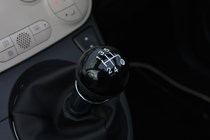
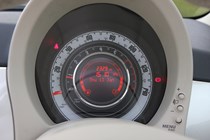

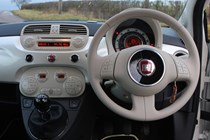
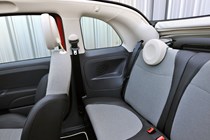

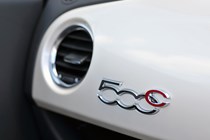
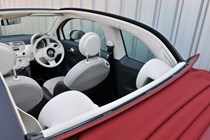
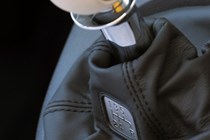
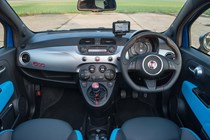


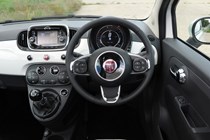
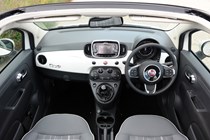
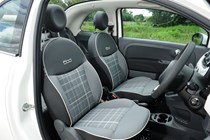
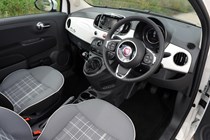
.jpg)
.jpg)



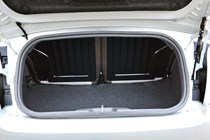
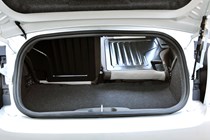
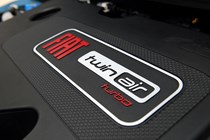
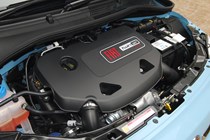

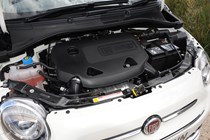
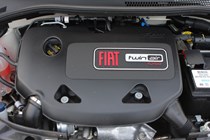
























.jpg?quality=50)
.jpg?quality=50)

























































.jpg?quality=50)
.jpg?quality=50)









